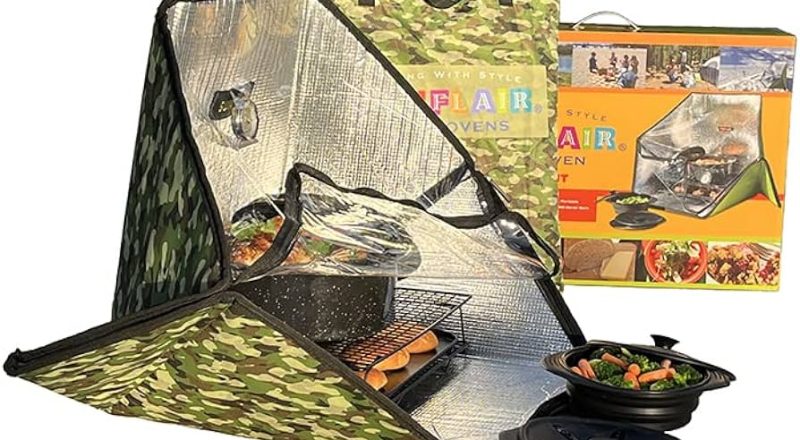Introduction:
Solar ovens offer a sustainable and eco-friendly alternative for cooking food using the power of the sun. These innovative appliances utilize sunlight as an energy source to generate heat, allowing for the preparation of meals without the need for traditional fossil fuels. In this article, we will explore the working principles and components of solar ovens, discussing the science behind solar heating, different types of solar ovens, and their advantages and limitations. By understanding how solar ovens work, you can harness the power of the sun to cook delicious meals while reducing your carbon footprint.
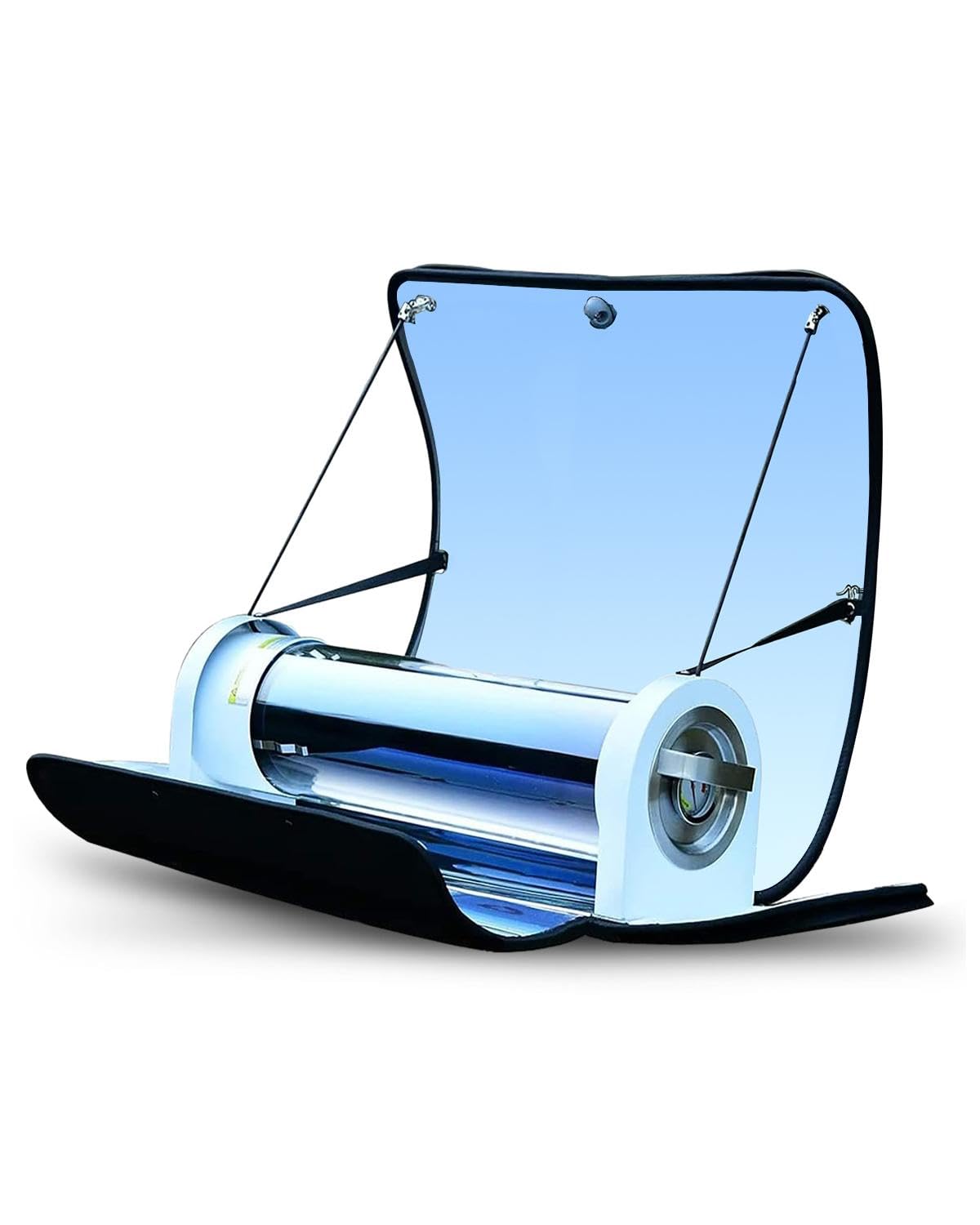
How do solar ovens work?
Harnessing Solar Energy:
a. Solar Radiation: Solar ovens rely on the sun’s radiation to generate heat. The sun emits various types of radiation, including visible light and infrared radiation. Solar ovens capture and utilize these forms of energy to create heat for cooking.
b. Absorption and Conversion: The oven’s design and materials are engineered to absorb and convert solar radiation into heat energy. This energy conversion process allows the oven to reach and maintain high cooking temperatures.
Solar Oven Components:
a. Reflectors: Solar ovens often feature reflective surfaces or reflector panels that concentrate sunlight onto the cooking chamber. These reflectors help maximize the amount of solar radiation absorbed by the oven.
b. Insulation: The oven’s insulation minimizes heat loss, ensuring that captured solar energy remains within the cooking chamber. Insulation materials, such as foam or reflective layers, reduce heat transfer to the surrounding environment.
c. Cooking Chamber: The cooking chamber is where the food is placed for cooking. It is designed to absorb and retain heat, allowing for efficient cooking.
d. Transparent Cover: The top portion of a solar oven typically consists of a transparent cover, such as glass or plastic. This cover allows sunlight to enter the oven while preventing heat from escaping.

Types of Solar Ovens:
a. Box Ovens: Box solar ovens are the most common type and are typically made of insulating materials such as wood, metal, or cardboard. They feature reflectors on the sides or lid to direct sunlight into the cooking chamber.
b. Panel Cookers: Panel solar cookers consist of flat, reflective panels that focus sunlight onto a cooking pot. These cookers are lightweight, portable, and easy to assemble, making them ideal for outdoor activities.
c. Parabolic Cookers: Parabolic solar cookers use a curved reflective surface to concentrate sunlight onto a central point. This design allows for high cooking temperatures and faster cooking times.
Solar Oven Working Process:
a. Sunlight Collection: Solar ovens are positioned to face the sun, allowing the reflectors to capture and direct sunlight into the cooking chamber. The reflective surfaces maximize the absorption of solar radiation.
b. Radiation Conversion: Once the sunlight enters the cooking chamber, it is absorbed by the dark-colored surfaces, such as black pots or pans. The absorbed sunlight is then converted into heat energy.
c. Heat Retention: The insulation materials surrounding the cooking chamber prevent heat loss by minimizing the transfer of heat to the environment. This helps maintain a consistent cooking temperature.
d. Cooking Time: Solar ovens generally require longer cooking times compared to conventional cooking methods. The duration varies depending on factors such as outside temperature, amount of sunlight, and the dish being cooked.
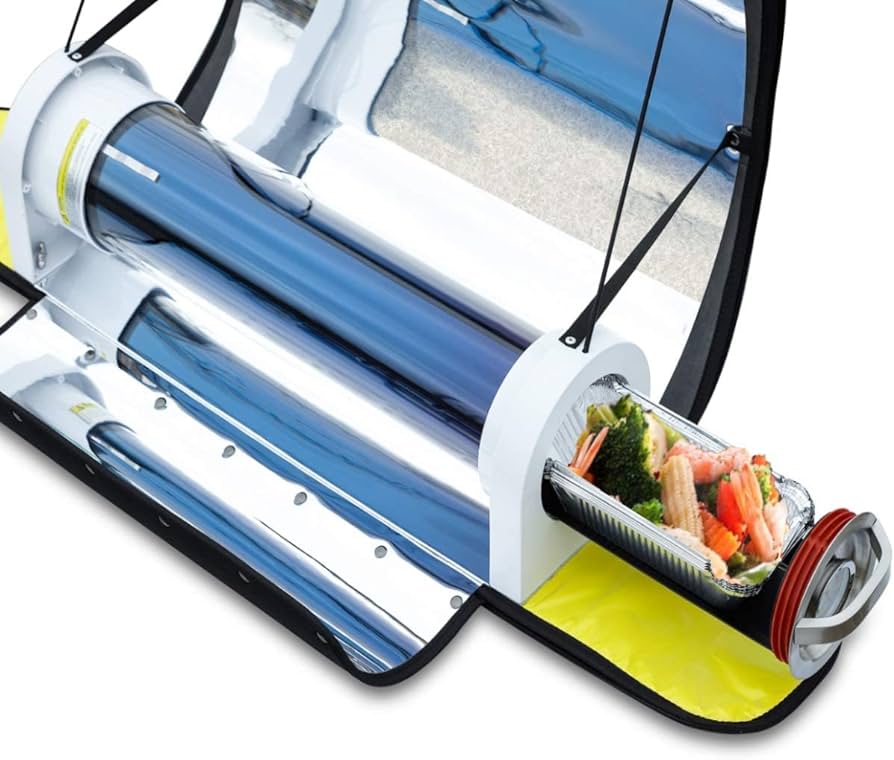
Advantages of Solar Ovens:
a. Renewable Energy: Solar ovens utilize renewable energy from the sun, reducing reliance on non-renewable fossil fuels. This contributes to a cleaner and more sustainable cooking process.
b. Cost Savings: Solar ovens eliminate the need for traditional fuel sources, helping users save money on energy costs in the long run. Once the initial investment is made, using a solar oven is essentially free of charge.
c. Portability: Many solar ovens are lightweight and portable, making them ideal for outdoor activities such as camping, picnics, or beach outings. They can be easily transported and set up wherever sunlight is available.
d. Environmentally Friendly: Solar ovens produce zero greenhouse gas emissions and have a minimal environmental impact. By using clean energy, users can reduce their carbon footprint and contribute to a healthier planet.
Limitations of Solar Ovens:
a. Weather Dependence: Solar ovens require direct sunlight to function effectively. Cloudy or overcast days can limit the oven’s ability to reach high cooking temperatures or extend cooking times.
b. Seasonal Variations: The availability and intensity of sunlight vary depending on the season and geographical location. Winter months or regions with limited sunlight may pose challenges for solar oven cooking.
c. Cooking Time and Temperature: Solar ovens generally require longer cooking times and may not reach the same high temperatures as conventional ovens. This can affect certain cooking techniques or recipes that rely on quick high-heat cooking.
d. Food Quantity: Solar ovens are typically designed for small to medium-sized dishes. Cooking large quantities or oversized items may require additional time and careful positioning within the oven.
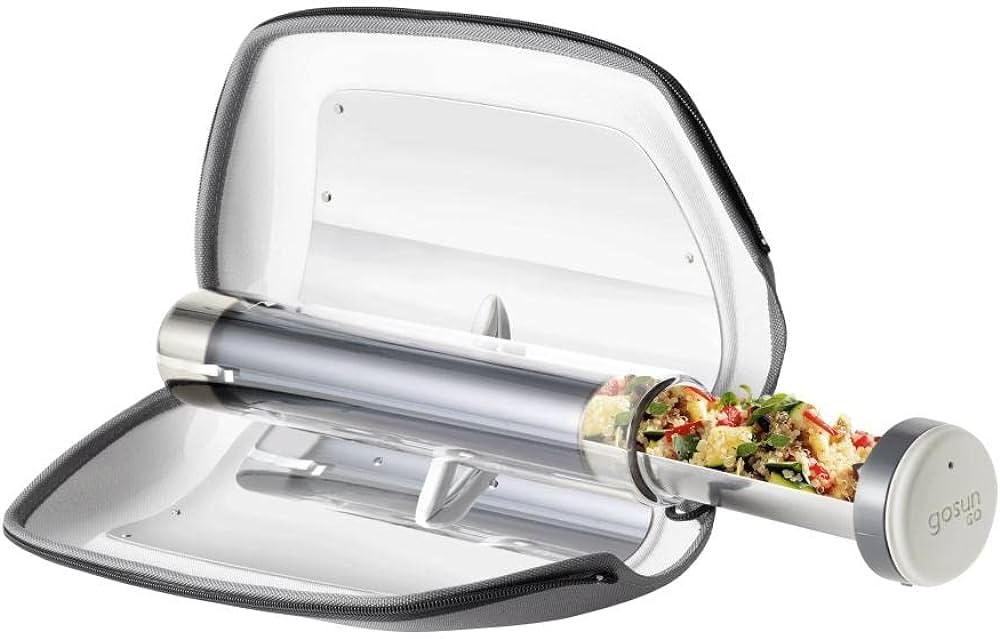
Tips for Effective Solar Oven Cooking:
a. Sun Tracking: Adjust the oven’s position throughout the day to ensure maximum exposure to direct sunlight. This may involve periodically rotating or repositioning the oven to capture the sun’s rays.
b. Food Placement: Properly position the cooking vessel within the oven to maximize heat absorption. Dark-colored pots or pans are more effective at absorbing solar radiation.
c. Preheating: Preheating the solar oven before adding the food can help speed up the cooking process, especially on cooler or less sunny days.
d. Optimal Time: Plan and start cooking earlier in the day to take advantage of maximum sunlight. This allows for sufficient cooking time and ensures that the sun is still high in the sky.
Safety Considerations:
a. Sun Exposure: When using a solar oven, it is essential to protect yourself from direct sun exposure. The intense sunlight can cause sunburn or heat-related illnesses. Wear protective clothing, use sunscreen, and stay hydrated while operating the oven.
b. Handling Hot Surfaces: The cooking chamber and cooking vessel can become extremely hot during use. Use oven mitts or heat-resistant gloves when handling any components of the solar oven to prevent burns.
c. Food Safety: Properly monitor cooking times and temperatures to ensure that food reaches safe cooking temperatures and is thoroughly cooked to prevent foodborne illnesses.
d. Children and Pets: Keep children and pets away from the solar oven during operation to prevent accidents and burns.
Maintenance and Care:
a. Cleaning: Regularly clean the solar oven to remove dirt, debris, and food residue. Use mild soap and water, and avoid using abrasive cleaning materials that can damage the oven’s surfaces.
b. Storage: When not in use, store the solar oven in a cool, dry place to protect it from environmental elements and prolong its lifespan.
c. Component Inspection: Periodically inspect the solar oven’s components, including reflectors, insulation, and transparent covers, for any signs of wear or damage. Replace any damaged or worn-out parts to ensure optimal performance.
d. Proper Storage of Reflectors: If the solar oven has removable reflectors, store them safely to prevent bending or breakage. Properly stored reflectors maintain their reflective properties for effective heat concentration.
Cost and Accessibility:
a. Affordability: Solar ovens are available at various price points, ranging from budget-friendly options to more advanced models. Consider your budget and cooking needs when selecting a solar oven.
b. DIY Options: Building a solar oven yourself can be a cost-effective alternative to purchasing a pre-made one. Numerous DIY plans and tutorials are available online for those interested in constructing their own solar oven using readily available materials.
c. Local Resources: Explore local organizations, community centers, or environmental groups that may offer workshops or resources for learning about solar oven construction and usage.
d. Accessibility in Developing Regions: Solar ovens have gained popularity in developing regions, where access to traditional cooking fuels may be limited. Solar cooking initiatives and organizations are working to make solar ovens more accessible to communities that can benefit from this sustainable cooking technology.
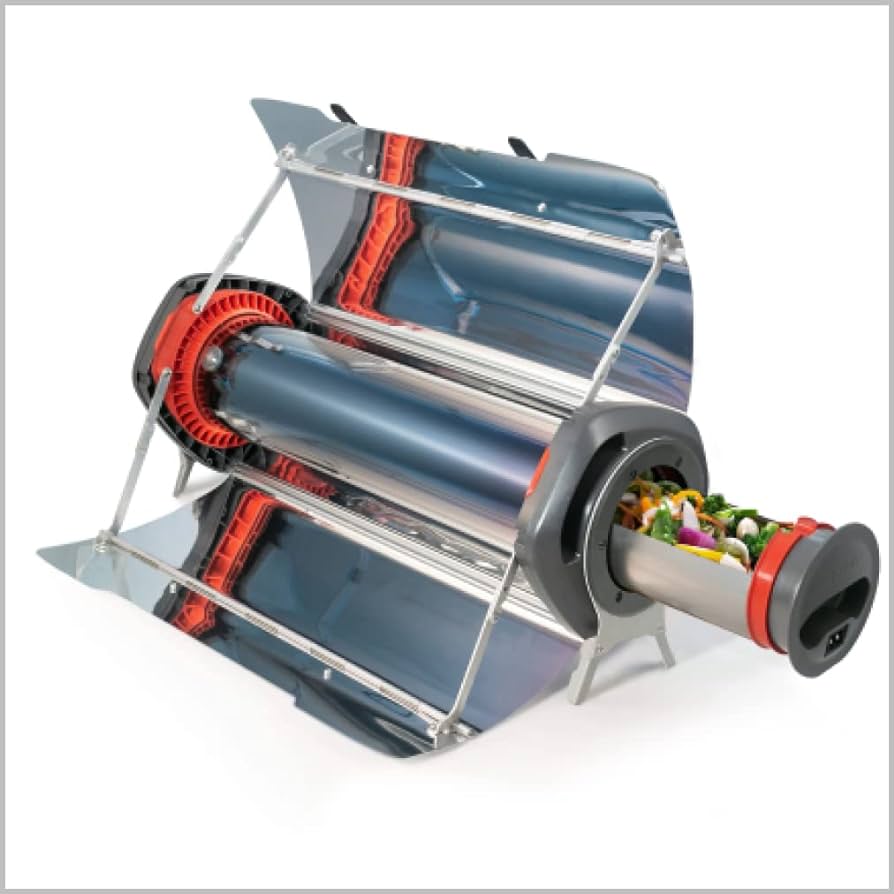
Conclusion:
Solar ovens harness the power of the sun to provide an eco-friendly and sustainable cooking alternative. By capturing and converting solar radiation into heat, these innovative devices enable users to cook meals without relying on traditional fossil fuels. With reflective surfaces, insulation, and efficient designs, solar ovens offer a viable and low-cost cooking solution. They contribute to reduced energy consumption, cost savings, and a cleaner environment. While solar ovens have limitations such as weather dependence and longer cooking times, proper positioning, food placement, and timing can maximize their effectiveness. By embracing solar oven technology, individuals can enjoy the benefits of solar cooking while making a positive impact on the planet.

